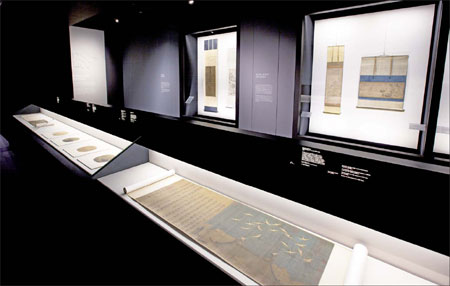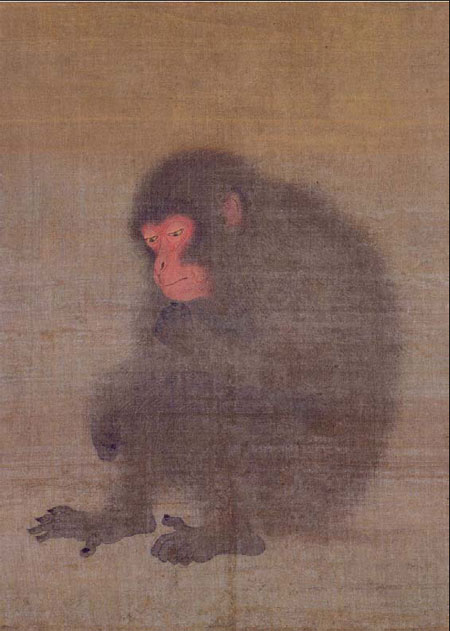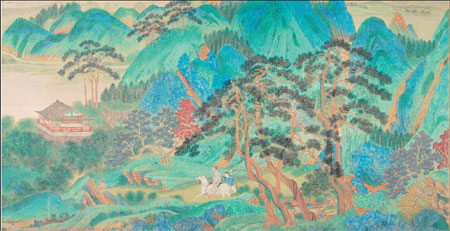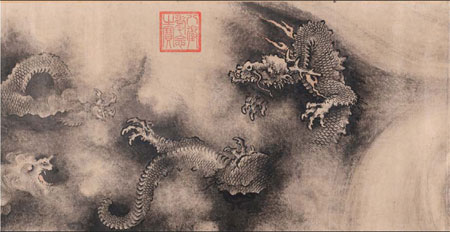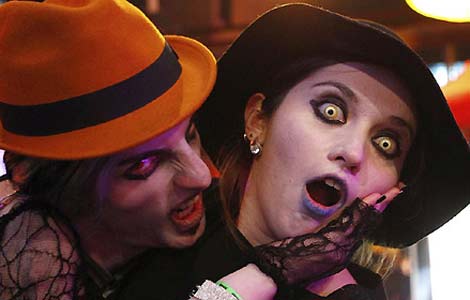Drawing history
Updated: 2013-11-01 10:10
By Cecily Liu and Qiu Bo (China Daily Europe)
|
|||||||||||
An exhibition in London of traditional Chinese paintings is encouraging Western critics and viewers to acknowledge the genius of Eastern art
London's Victoria and Albert Museum has embarked on an ambitious quest to give Chinese painting its rightful place in the tradition of world art, through its exhibition Masterpieces of Chinese Painting: 700-1900.
The quest has made an immediate impact. On Oct 21, under the online headline, "Made in China: how landscape painting was invented in the East", Guardian art critic Jonathan Jones wrote that curator Zhang Hong- xing's "great exhibition turns the story of art upside down".
Jones says that in the West Leonardo Da Vinci has always been credited with inventing landscape painting with a sketch he produced in 1473.
Jones says the exhibition has landscape paintings from 12th century China, 200 years before da Vinci.
Jones even says, "I can't resist airing the theory that Leonardo stole the idea of landscape painting from China Might something have reached the West along the Silk Road?"
The exhibition, which runs from Oct 26 to Jan 19, comprises more than 70 works, including some of the earliest surviving Chinese paintings loaned from museums around the world, many of which are being shown in Europe for the first time.
Zhang says he wants to show the greatness and diversity of Chinese painting to a Western audience, because the West has little knowledge of it.
"The West has a thorough understanding of Chinese art mediums like porcelain Unfortunately this is not the case for paintings."
Zhang says the last major exhibition of Chinese painting in Britain was in 1936, which highlights the lack of opportunities for Westerners to learn about this art form.
"I think this is partly because the West has a comprehensive body of knowledge on painting history and painting criticism, so it is difficult for Chinese paintings to fit into this existing system," he says.
For example, watercolor painting on paper is considered marginal in the Western tradition, and because Western scholars have classified Chinese paintings as watercolors, they have not paid much attention to them.
However, Chinese paintings are very different from conventional Western watercolors. They are painted on paper and silk with brushes dipped in ink, and they express a variety of themes, including religion, nature and other themes treasured in Western painting. "So to call them watercolors is just looking at the material," Zhang says.
The response in The Guardian to the exhibition is exactly the demystification he hopes to achieve, Zhang says.
Masterpieces of Chinese Painting: 700 - 1900 is in six successive periods to chart the evolving styles and subject matter. The earliest paintings, from 700 to 950, were mostly made for temples, featuring Buddhists and Bodhisattvas, as well as constellations.
Paintings produced between 950 and 1250 reveal a growing enthusiasm for the natural world, and hence the rise of landscape painting.
Then, during 1250-1400, many artists lived in seclusion against a backdrop of suppression by the Mongol Yuan dynasty, and their paintings moved away from depicting reality to a more stylistic approach, often laden with literary, philosophical and personal associations.
The next section, 1400-1600, explores the artistic explosion driven by the political stability and economic prosperity of the Ming Dynasty (1368-1644). Artists used expensive pigments and their subject matter ranged from romantic characters or episodes in history and literature to topographical views of famous sites, gardens, rare animals and plants.
This is the period of the famous painting by Du Lin, Court Ladies in the Inner Palace, which shows women playing football before the custom of foot binding became commonplace.
Paintings of the final period, 1600-1900, focus on two themes: challenging the past and looking to the West.
In challenging the past, some painters framed their work as a dialogue with tradition. One example is the 14-meter-long Flowers on the River by Bada Shanren, which depicts flowers through intricate handling of ink as an expression of intense emotions.
Such a period of great creativity in China coincided with the introduction of European paintings there through Jesuit missionaries, who taught Chinese artists the laws of linear perspective and chiaroscuro, the technique of using strong contrast of light and dark. These techniques were modified to suit the Chinese aesthetic and used to create the illusion of depth and light.
Zhang was born and grew up in Jiangsu province and studied at the Nanjing Institute of Arts before coming to the United Kingdom in the early 1990s to study at the School of Oriental and African Studies at the University of London.
After arriving in the UK, he quickly realized that Western artists and academics knew very little about Chinese painting, even though painting is a highly regarded art form in the West.
For example, there are few mentions of Chinese paintings in Western books and documentaries, including art historian Ernst Gombrich's famous work. The Story of Art, which was published in 1950, and the 1969 BBC documentary, Civilisation: A Personal View by Kenneth Clark.

"These famous works of art history showcased the depth of Western art, but I think Chinese art is just as deep and longstanding, so I wanted to do an exhibition to help Western audiences see what Chinese artists were expressing and feeling," Zhang says.
The technical and logistical challenges of this exhibition were difficult. In particular, it was hard to put together an exhibition by borrowing paintings from museums all over the world, because different museums have different rules about how to look after old fragile paintings.
"It was very hard work trying to present to an audience a diverse range of Chinese paintings through different historical periods and also keep in mind what was practical," he says.
Alongside the exhibition at the V&A there are also many Chinese cultural events for the public to enjoy the exhibition in different ways, including digital installations, musical performances, painting demonstrations and craft workshops.
There are also many items of merchandise based on this exhibition, including two scarves made by contemporary Chinese artists Xiang Jing and Qu Guangci, which were inspired by paintings in the exhibition and reflect the two young artists' own interpretations of traditional Chinese culture.

Xiang and Qu founded their own sculpture studio, X+Q, in 2007. X+Q represents the first letters of their names, and translates in Chinese to xiqi, meaning rare, reflecting the artists' ambition to create unique products.
Like X+Q, many contemporary Chinese artists and designers have been testing their work in international markets in recent years, with a view to presenting the best of Chinese artistic tradition to the West.
But Zhang holds a rather "critical" view of Chinese contemporary artists, arguing that their work lags far behind the grandeur of historical Chinese painting in both creativity and execution.
"I say this not because I have any criticism against particular artists, but because I think contemporary artists in China sometimes do not fully appreciate the depth and breadth of Chinese traditional paintings."
Zhang says only when Chinese contemporary artists understand more about Chinese traditional paintings can they understand more about themselves and how to position their work within the tradition.
He says many young Chinese artists are producing work influenced by Western art, but he believes they also need to develop more understanding of the roots of Western art traditions, as the same diversity exists for Western art from Roman times to the Middle Ages and on to today.
"It is only then that one can choose which tradition to incorporate into one's own style, as opposed to looking at the surface of Eastern art against Western art as mere symbols to be talked about," Zhang says.
Please contact the writers at cecily.liu@chinadaily.com.cn and qiubo@chinadaily.com.cn
|
The exhibition at Victoria and Albert Museum in London has landscape paintings from 12th century China, 200 years before da Vinci was credited with inventing the genre. Photos Provided to China Daily |
|
Monkey by unidentified artist, traditionally attributed to Mao Song ( 12th century). |
|
Saying Farewell at Xunyang, by Qiu Ying (1498-1552) on display. |
|
Nine Dragons by Chen Rong (1189-1268). |
( China Daily European Weekly 11/01/2013 page24)
Today's Top News
Premier Li seeks point of balance
Reform roadmap before key meeting
Intel leaks proved justified: Snowden
Cooperation needed in terror fight
Beijing to further boost visa-free stay
Shenzhou X crew awarded for outstanding service
US to file murder complaint against LAX shooter
China's non-manufacturing PMI rises in October
Hot Topics
Lunar probe , China growth forecasts, Emission rules get tougher, China seen through 'colored lens', International board,
Editor's Picks

|
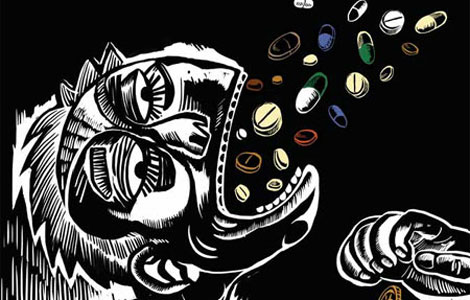
|
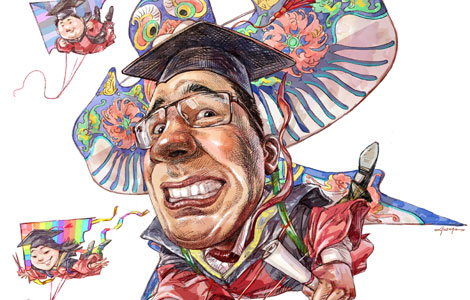
|

|
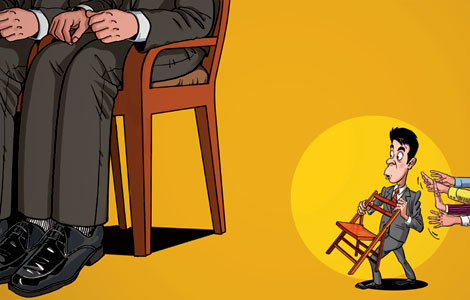
|

|
